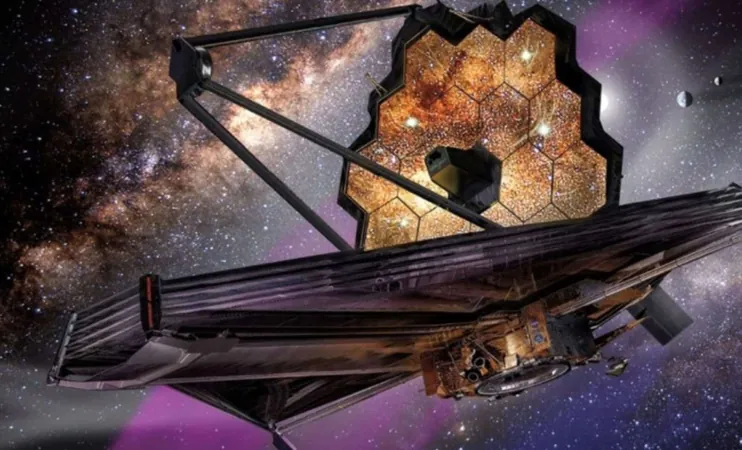
A Cosmic Conundrum: James Webb Telescope Reveals Major Flaw in Our Understanding of the Universe
2025-04-25
Author: Ken Lee
James Webb Telescope Unravels a Cosmic Mystery
The James Webb Space Telescope (JWST) has thrown a wrench into our understanding of the cosmos by confirming a perplexing phenomenon known as the Hubble Tension. This dilemma showcases the glaring differences in measurements of the universe's expansion rate—which could rock the very foundations of modern physics!
The Hubble Tension: A Deepening Dilemma
For years, scientists have grappled with the Hubble Tension, an ongoing conflict arising from two differing methods to measure how fast the universe is expanding. On one hand, we have the Cosmic Microwave Background (CMB) measurements, which indicate a rate of about 67 km/s/Mpc, thanks to data gathered by the Planck Satellite. On the other, measurements from Cepheid variable stars suggest a much higher expansion rate of 74 km/s/Mpc. This significant gap has left astronomers puzzled.
Confirming the Discrepancy
Recent observations made possible by the JWST's advanced infrared technology have solidified these measurements, ruling out the likelihood of previous errors. By refining the estimates of Cepheid stars, JWST has not only corroborated earlier Hubble data but also illuminated a real and troubling discrepancy that challenges our previous assumptions.
A Crisis in Cosmology: What Lies Ahead?
The implications of the confirmed Hubble Tension are profound. Adam Riess, a leading physicist at Johns Hopkins University, emphasizes that we may have misunderstood the universe fundamentally. Renowned Nobel laureate David Gross has termed this a 'crisis' in cosmology, signaling that current models—rooted in concepts like dark matter and dark energy—may require a dramatic revision.
The Dynamic Duo: JWST and Hubble
The synergy between the JWST and the Hubble Space Telescope has been instrumental in validating the existence of the Hubble Tension. Riess points out that their combined efforts provide a dual-pronged approach that reinforces the reliability of Hubble's measurements as we explore deeper into cosmic distances.
Opening Doors to New Theories
Armed with this confirmed tension, scientists are now on the brink of new theories. Some speculate the existence of exotic particles called unparticles that might explain the accelerated universe expansion. Others are considering the intriguing idea of extra dimensions, as proposed in string theory, which could affect the cosmic expansion rate. Furthermore, there's an emerging theory that gravity might behave differently at vast cosmic scales than previously thought, posing yet another challenge to established understanding.
The Cosmos Awaits Answers
As researchers delve deeper into this cosmic enigma, the stakes are high. The revelations brought forth by the JWST could not only reshape our understanding of the universe but also usher in a new era of astronomical discoveries. The skies may just hold the answers to questions we have yet to ask!


 Brasil (PT)
Brasil (PT)
 Canada (EN)
Canada (EN)
 Chile (ES)
Chile (ES)
 Česko (CS)
Česko (CS)
 대한민국 (KO)
대한민국 (KO)
 España (ES)
España (ES)
 France (FR)
France (FR)
 Hong Kong (EN)
Hong Kong (EN)
 Italia (IT)
Italia (IT)
 日本 (JA)
日本 (JA)
 Magyarország (HU)
Magyarország (HU)
 Norge (NO)
Norge (NO)
 Polska (PL)
Polska (PL)
 Schweiz (DE)
Schweiz (DE)
 Singapore (EN)
Singapore (EN)
 Sverige (SV)
Sverige (SV)
 Suomi (FI)
Suomi (FI)
 Türkiye (TR)
Türkiye (TR)
 الإمارات العربية المتحدة (AR)
الإمارات العربية المتحدة (AR)